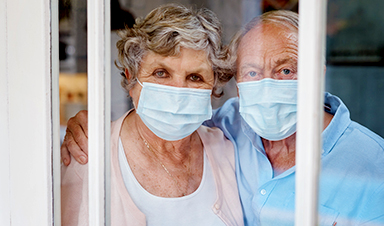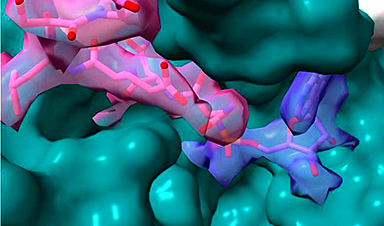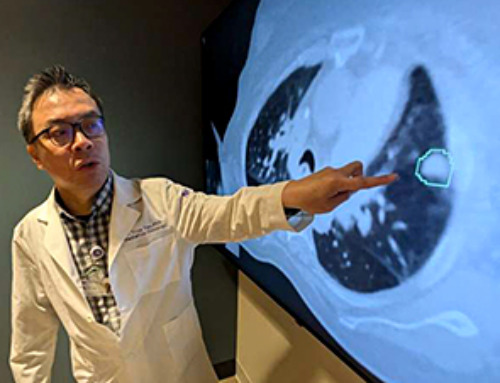In a recent study published in PLoS Computational Biology, researchers used mathematical modelling to evaluate whether prioritizing older individuals for coronavirus disease 2019 (COVID-19) booster vaccinations consistently leads to optimal public health outcomes across diverse socio-economic settings.
In the early stages of the COVID-19 pandemic, non-pharmaceutical interventions (NPIs) were crucial in reducing transmission and protecting healthcare systems.
The introduction of vaccines, such as those from Pfizer-BioNTech, Oxford-AstraZeneca, and Moderna, significantly altered the pandemic’s trajectory by reducing severe cases and relaxing NPIs.
However, immunity from these vaccines wanes over time, necessitating booster vaccinations, especially with emerging variants.
Further research is needed to refine booster vaccination strategies to address varying population structures and socio-economic contexts globally, ensuring the most effective public health outcomes.
About the study
The study extends a previously published age-structured compartmental model of Severe Acute Respiratory Syndrome Coronavirus 2 (SARS-CoV-2) transmission and vaccination.
This deterministic model, governed by ordinary differential equations, divides individuals into compartments based on age, current infection status, and immune status before any infection.
The model includes 16 age groups, with individuals classified as Susceptible, Exposed, Infectious (symptomatic or asymptomatic), or Recovered.
To more accurately represent the time spent in the exposed class, the model employs gamma distributions, which provide a realistic representation of epidemiological periods.
The model also tracks immune status, categorizing individuals into groups such as Vaccinated, Boosted, Partially Waned, Fully Waned, and Unvaccinated, reflecting their infection and vaccination history.
The effectiveness of vaccination is incorporated into the model, accounting for reduced risks of infection, symptoms, hospitalization, and death.
Using this model, the study examines the impacts of six different age-based booster vaccination strategies across eight countries. Strategy 1 prioritizes the oldest individuals first, while Strategy 6 explores vaccinating those with the most contacts to provide indirect protection to the elderly.
Strategies 2-5 test variations of these approaches, generally focusing on prioritizing older individuals for booster vaccination. The analysis assumes limited vaccine availability, with a 10% population coverage baseline and a 90% maximum uptake per age group.
Study results
The population’s age structure varies significantly across countries, with high-income countries generally having a larger proportion of older individuals compared to low-income countries.
This demographic difference influences the distribution of booster vaccines under different vaccination strategies. In the UK, for instance, strategies 1-4 that prioritize older individuals for booster vaccination result in a substantial number of individuals aged 50-74 receiving vaccines. However, the oldest individuals (75+) may not be fully covered due to the limited vaccine supply.
On the other hand, Strategies focused on vaccinating younger individuals, particularly those aged 20-49, who typically have more contacts and, therefore, could potentially contribute to indirect protection of older populations.
However, the age distribution of vaccinated individuals under each strategy varies between countries. For example, in Sierra Leone, where the proportion of older individuals is relatively small, Strategies 1-4 effectively vaccinate almost all older individuals, leading to identical outcomes for these strategies.
This contrasts with the situation in the UK, where a larger elderly population means that not all older individuals can be vaccinated under these strategies due to vaccine constraints.
When considering the impact of these strategies on public health outcomes during a wave of infections caused by a novel SARS-CoV-2 variant, the model projections indicated that Strategy 1 consistently resulted in the fewest deaths across all countries analyzed.
This outcome is particularly evident in high-income countries, where a large proportion of older individuals contribute to a higher projected number of deaths if they are not prioritized for booster vaccination.
In contrast, in countries like Sierra Leone, the small number of older individuals allows nearly all of them to receive booster vaccines under Strategy 1, leading to fewer deaths overall.
The analysis also examined the projected Years of Life Lost (YLL), which accounts for the number of deaths and the ages at which they occur.
While it might be expected that vaccinating younger individuals could reduce YLL, the model consistently showed that Strategy 1, which prioritizes the oldest individuals, was optimal in minimizing YLL. This is due to the higher risk of severe outcomes and mortality associated with SARS-CoV-2 infection in older populations.
Sensitivity analyses further supported these findings, showing that Strategy 1 led to fewer deaths and YLL under various assumptions, including different levels of vaccine availability, uptake rates, and timing of booster administration.
Even when the outbreak began 150 days after booster vaccines were administered, resulting in some immunity waning, Strategy 1 remained the most effective approach in reducing deaths and YLL.
Conclusions
To summarize, future SARS-CoV-2 transmission will be influenced by novel variants, booster vaccinations, and immunity dynamics. Unlike the pandemic’s early stages, many individuals globally are now infected or vaccinated, impacting immunity and transmission.
In this evolving scenario, it is essential to reassess the effectiveness of past interventions and explore new strategies.
This study evaluated different age-based booster vaccination strategies and found that prioritizing older individuals consistently leads to better public health outcomes, regardless of varying population structures.
- Bouros I, Hill EM, Keeling MJ, et al. (2024) Prioritizing older individuals for COVID-19 booster vaccination leads to optimal public health outcomes in a range of socio-economic settings. PLoS Comput Biol. doi:https://doi.org/10.1371/journal. pcbi.1012309. https://journals.plos.org/ploscompbiol/article?
News
Team finds flawed data in recent study relevant to coronavirus antiviral development
The COVID pandemic illustrated how urgently we need antiviral medications capable of treating coronavirus infections. To aid this effort, researchers quickly homed in on part of SARS-CoV-2's molecular structure known as the NiRAN domain—an [...]
Drug-Coated Neural Implants Reduce Immune Rejection
Summary: A new study shows that coating neural prosthetic implants with the anti-inflammatory drug dexamethasone helps reduce the body’s immune response and scar tissue formation. This strategy enhances the long-term performance and stability of electrodes [...]
Scientists discover cancer-fighting bacteria that ‘soak up’ forever chemicals in the body
A family of healthy bacteria may help 'soak up' toxic forever chemicals in the body, warding off their cancerous effects. Forever chemicals, also known as PFAS (per- and polyfluoroalkyl substances), are toxic chemicals that [...]
Johns Hopkins Researchers Uncover a New Way To Kill Cancer Cells
A new study reveals that blocking ribosomal RNA production rewires cancer cell behavior and could help treat genetically unstable tumors. Researchers at the Johns Hopkins Kimmel Cancer Center and the Department of Radiation Oncology and Molecular [...]
AI matches doctors in mapping lung tumors for radiation therapy
In radiation therapy, precision can save lives. Oncologists must carefully map the size and location of a tumor before delivering high-dose radiation to destroy cancer cells while sparing healthy tissue. But this process, called [...]
Scientists Finally “See” Key Protein That Controls Inflammation
Researchers used advanced microscopy to uncover important protein structures. For the first time, two important protein structures in the human body are being visualized, thanks in part to cutting-edge technology at the University of [...]
AI tool detects 9 types of dementia from a single brain scan
Mayo Clinic researchers have developed a new artificial intelligence (AI) tool that helps clinicians identify brain activity patterns linked to nine types of dementia, including Alzheimer's disease, using a single, widely available scan—a transformative [...]
Is plastic packaging putting more than just food on your plate?
New research reveals that common food packaging and utensils can shed microscopic plastics into our food, prompting urgent calls for stricter testing and updated regulations to protect public health. Beyond microplastics: The analysis intentionally [...]
Aging Spreads Through the Bloodstream
Summary: New research reveals that aging isn’t just a local cellular process—it can spread throughout the body via the bloodstream. A redox-sensitive protein called ReHMGB1, secreted by senescent cells, was found to trigger aging features [...]
AI and nanomedicine find rare biomarkers for prostrate cancer and atherosclerosis
Imagine a stadium packed with 75,000 fans, all wearing green and white jerseys—except one person in a solid green shirt. Finding that person would be tough. That's how hard it is for scientists to [...]
Are Pesticides Breeding the Next Pandemic? Experts Warn of Fungal Superbugs
Fungicides used in agriculture have been linked to an increase in resistance to antifungal drugs in both humans and animals. Fungal infections are on the rise, and two UC Davis infectious disease experts, Dr. George Thompson [...]
Scientists Crack the 500-Million-Year-Old Code That Controls Your Immune System
A collaborative team from Penn Medicine and Penn Engineering has uncovered the mathematical principles behind a 500-million-year-old protein network that determines whether foreign materials are recognized as friend or foe. How does your body [...]
Team discovers how tiny parts of cells stay organized, new insights for blocking cancer growth
A team of international researchers led by scientists at City of Hope provides the most thorough account yet of an elusive target for cancer treatment. Published in Science Advances, the study suggests a complex signaling [...]
Nanomaterials in Ophthalmology: A Review
Eye diseases are becoming more common. In 2020, over 250 million people had mild vision problems, and 295 million experienced moderate to severe ocular conditions. In response, researchers are turning to nanotechnology and nanomaterials—tools that are transforming [...]
Natural Plant Extract Removes up to 90% of Microplastics From Water
Researchers found that natural polymers derived from okra and fenugreek are highly effective at removing microplastics from water. The same sticky substances that make okra slimy and give fenugreek its gel-like texture could help [...]
Instant coffee may damage your eyes, genetic study finds
A new genetic study shows that just one extra cup of instant coffee a day could significantly increase your risk of developing dry AMD, shedding fresh light on how our daily beverage choices may [...]





















